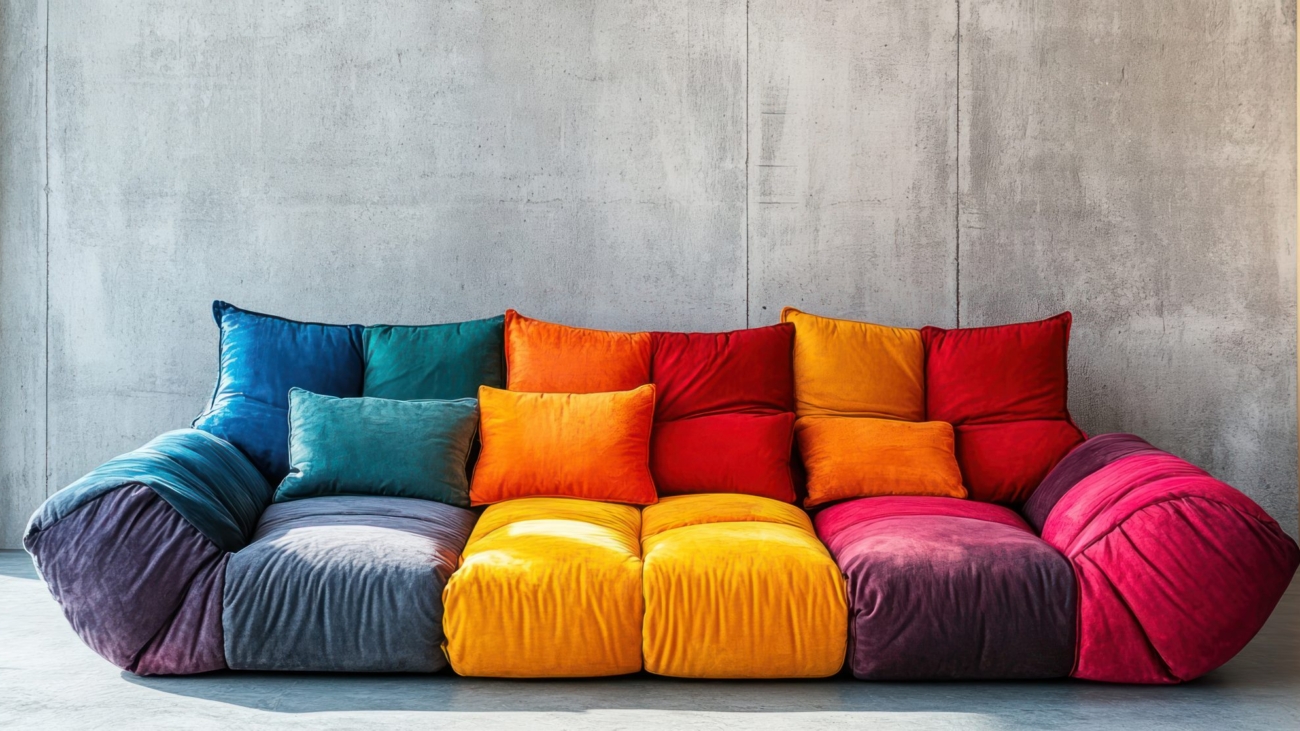Striped sofas are one of the most versatile and timeless choices in interior design. With their ability to blend classic appeal with contemporary trends, these statement pieces can elevate virtually any living space. Whether you’re aiming for a bold, modern look or a subtle, traditional aesthetic, incorporating stripes into your sofa design adds visual interest, structure, and personality without overwhelming the room. This blog explores ten accessible and stylish ways to incorporate striped sofas into your home, offering practical advice for layout, color coordination, and complementary décor.
1. Classic Nautical Stripes
Nothing evokes timeless charm quite like navy and white stripes. A sofa with crisp, horizontal stripes can serve as the focal point of a coastal-inspired living room. Pair it with light wood accents, woven rugs, and crisp linen throw pillows to maintain a fresh, airy feel. This combination works particularly well in rooms with abundant natural light, enhancing the sense of space and openness.
2. Bold Contrasting Stripes
For those who crave drama, high-contrast stripes in black and white or deep jewel tones can make a striking visual statement. Such sofas work best in modern, minimalist interiors, where clean lines and monochromatic palettes allow the striped pattern to shine. Balance the boldness with neutral walls, metallic accents, or simple geometric rugs to avoid visual overload.
3. Subtle Tonal Stripes
If you prefer a more understated approach, consider a sofa with tonal stripes—variations of the same color that add texture without competing with other elements in the room. This is ideal for neutral interiors where warmth and cohesion are key. Soft beige, taupe, or gray stripes blend seamlessly with surrounding décor, creating a refined, sophisticated atmosphere.
4. Vertical Stripes for Height
Vertical stripes on a sofa can visually elongate the piece, making low ceilings or compact rooms appear taller. This technique adds elegance and a sense of grandeur to smaller spaces. Complement with a high-backed chair or tall floor lamps to further emphasize verticality while maintaining a balanced composition.
5. Mixed Stripe Directions
Combining vertical, horizontal, or even diagonal stripes within the same piece can create a playful, dynamic look. This approach works particularly well for eclectic or contemporary interiors, where experimentation is encouraged. Keep other elements simple to ensure that the striped sofa remains the room’s centerpiece without clashing with surrounding patterns.
6. Pastel Stripes for Softness
Pastel-striped sofas introduce a gentle, inviting energy to living spaces. Light pinks, mint greens, and soft blues can make a room feel cheerful and tranquil simultaneously. Pair these with light wood furniture, soft throws, and neutral walls to enhance the sense of serenity. Pastel stripes are especially effective in bedrooms, sunrooms, or casual lounges.
7. Earth-Toned Stripes
For a grounded, natural aesthetic, choose earthy stripes in shades of brown, olive, or terracotta. These colors evoke warmth and stability, ideal for living rooms aiming for a cozy, organic feel. Pair with natural fibers like jute rugs, linen curtains, and wooden furniture to create a harmonious, inviting environment.
8. Oversized Bold Stripes
Oversized stripes can make a statement while keeping the décor simple. Large, wide stripes work particularly well in modern, minimalist interiors, providing a strong focal point without excessive ornamentation. To balance the boldness, use solid-colored accent pillows, understated artwork, and neutral rugs to maintain visual harmony.
9. Layered Textures and Stripes
A striped sofa doesn’t have to rely solely on pattern. Combining stripes with textured fabrics—like velvet, boucle, or linen—adds depth and sophistication. This approach works well in transitional interiors, bridging the gap between classic and contemporary styles. Layer with complementary throw blankets or cushions to enhance comfort and visual appeal.
10. Multi-Functional Striped Sofas
Modern living demands multifunctionality. Striped sofas that double as sleeper sofas, sectionals, or storage units combine style with practicality. Opting for stripes ensures that even multifunctional pieces retain a strong visual presence, maintaining elegance without sacrificing function. Neutral or subtle stripes allow the sofa to adapt to different rooms and settings over time.
Conclusion
Striped sofas offer a perfect balance between style and versatility. From bold, high-contrast designs to soft, tonal variations, the possibilities are virtually limitless. When selecting the ideal striped sofa, consider your room’s size, color palette, and overall aesthetic to ensure the piece complements your space seamlessly. By integrating a striped sofa thoughtfully, you can create a focal point that enhances your interior design, adding sophistication, depth, and timeless charm to your home.



